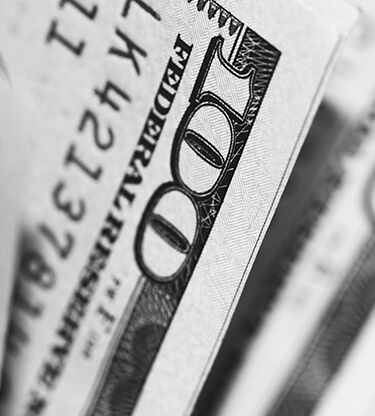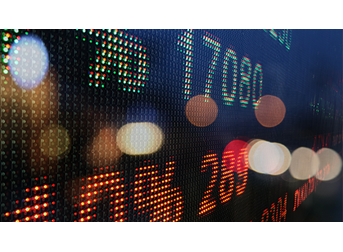Daily Market Pulse

Share Story
Dollar sell-off pauses
8 minute readUSD
Despite the risk-averse market environment, the dollar continued to fall versus its peers on Wednesday, with the U.S. Dollar Index falling 0.63% before entering a consolidation phase early Thursday. Although market optimism grows for a diplomatic settlement in the Easter European conflict, there has been no hint of a breakthrough in Russia-Ukraine talks. Ukraine's Defense Ministry reported that Russian soldiers were prepared to resume offensive operations, while the Pentagon stated that Russia was only repositioning around 20% of the troops stationed near Kyiv. Markets opened positively on Thursday, with U.S. stock futures edging higher in Asian hours after Wall Street snapped a strong rally, as optimism for Russia-Ukraine peace talks faded, and investors reassessed the prospect for inflation and the path of monetary policy. Dow futures increased by 0.2%, S&P 500 futures up by 0.3%, and Nasdaq 100 futures increased by 0.5%. Moving forward, the U.S. Bureau of Economic Analysis will release the February Personal Consumption Expenditures (PCE) Price Index, the Fed's favored gauge of inflation, along with Personal Income and Personal Spending figures.
EUR
The Euro closed 0.66% higher on Wednesday and continued to cling to modest gains, adding to its impressive gains of the previous two days. According to a European Commission study released on Wednesday, consumers and businesses in the EU have become substantially more gloomy since Russia's invasion last month, fearing that it will limit spending, increase unemployment, and accelerate price increases. Having said that, Germany reported a higher-than-expected increase in harmonized consumer prices of 7.6 percent, only hours after the government took the first legal step toward restricting gas supplies. The European Central Bank (ECB) responded to rising inflation this month by announcing plans to end net bond purchases by September, paving the way for it to hike interest rates this year if inflation remains high. Meanwhile, investors have boosted their wagers that the ECB will hike interest rates numerous times before returning them to zero by the end of the year. Moving forward, today will have the ECB Lane speech and the February unemployment rate figures.
GBP
The British pound closed 0.31% higher followed by falling early in the day and regaining ground amid positive statistics. The Office for National Statistics (ONS) in the United Kingdom revealed on Thursday that the Gross Domestic Product (GDP) increased by 6.6% year on year in the fourth quarter, exceeding the flash estimate and the market expectation of 6.5%. Service industries expanded more than expected, and exports increased as well. In addition, the UK's Nationwide House Price Index increased 14.3% year on year in March 2022, the largest gain since November 2004, and considerably beyond estimates of 13.5%. In other news, the FTSE 100 traded slightly higher on Thursday, maintaining levels not seen since February 16th, as traders digested weaker crude oil futures and positive economic data.
JPY
The Japanese Yen closed 0.85% higher in the previous session against the greenback. The Yen was strengthened against the U.S. dollar on Thursday, having recovered sharply from 6-year lows amid mounting fears that the government may intervene in currency markets, the Japanese currency is set to record its worst month since November 2016. The Yen is down about 6% in March as the Bank of Japan's (BOJ) steadfast commitment to maintaining enormous stimulus stands in stark contrast to other major central banks that have begun normalizing monetary policy. In addition, the BOJ said this week that it launched unlimited fixed-rate purchase operations for 10-year government bonds, as the central bank defended its yield objective in the face of rising global interest rates. In other news, the Nikkei 225 Index sank 0.7% on Thursday, while the wider Topix Index fell 1.1% as investors booked profits at the end of the fiscal year.
CAD
The Loonie closed 0.14% higher in the previous session before losing its gains on Thursday morning amid declining oil prices. Brent crude dropped 4.1% to $108.85 a barrel. Crude prices fell as allegations surfaced that the White House intends to access the country's oil reserves in order to curb increasing gasoline prices. Energy stocks fell alongside oil prices as investors considered news that the Biden administration is considering releasing one million barrels of crude from U.S. stockpiles to combat inflation and surging energy prices. Meanwhile, the Bank of Canada raised its overnight rate objective by 25 basis points to 0.5%, the first increase since October 2018, stressing that it will utilize its monetary policy instruments to bring inflation to the 2% target. It is likely to raise interest rates by 50 basis points at its April 13th meeting and by another 200 basis points this year. In other news, the S&P/TSX Composite Index finished slightly changed on Wednesday, as losses in technology and healthcare nearly outweighed gains in commodity-linked sectors. Going forward, investors will be watching for the publication of January GDP figures and the annual budget later in the day.
MXN
The Mexican Peso closed 0.54% higher yesterday against the greenback before losing its momentum this morning as investors continue to assess the Russia-Ukraine situation after the market optimism faded as the peace talks did not break through. On the data front, the Mexican unemployment rate declined from 4.4% in February 2021 to 3.7% in February 2022, above market predictions of 3.6%. The employed population increased by 3.3 million to 56 million, while the jobless population fell by 248 thousand to 2.2 million. In other news, Money transfers from Mexicans residing abroad increased by 27% last year, reaching a new high of $51.6 billion. Although remittances are increasing globally, they are expanding the quickest in Latin America, with Mexico receiving the most. Remittances helped compensate for lost jobs or unanticipated medical expenses. They also contributed to longer-term investments. New houses are being built, existing ones are being expanded, and farmers have enough money to purchase more livestock and seeds.
CNY
The Chinese Yuan closed 0.01% lower in the previous session against the greenback and continued to edge down this morning. This is mostly due to the reimposition of Covid lockdowns and the risks associated with rising commodities costs. Furthermore, economists are increasingly skeptical that China can meet its 5.5% GDP growth target this year, owing to escalating economic headwinds. The likelihood of additional monetary easing, with another reduction in China's reserve requirement ratio predicted in the second quarter, at a time when global central banks are raising interest rates, could also accelerate capital outflows and further weaken the Chinese currency. Furthermore, official statistics showed that China's manufacturing and services PMIs dropped at the same time, as Covid lockdowns and geopolitical unrest weighed on the country's economy. In other news, Mainland indices fell 6.1% in March, with the Shanghai Composite plunging 6.1% and the Shenzhen Component falling 10%, as challenges from numerous fronts mounted.
BRL
The Brazilian currency closed 0.23% down against the greenback in the previous session. The Brazilian currency declined as the market focused on the cease-fire discussions between Russian and Ukrainian officials. Abroad, the dollar is losing ground versus most other currencies around the world. Oil prices have risen by about 2%, with Brent trading above $112 per barrel. Investors are keeping an eye out for signs of progress in Russia-Ukraine talks. On the domestic front, FGV reported that the General Price Index – Market (IGP-M) remained at 1.74% in March and remains at a 12-month high of 14.77%, with fuel price adjustments already reflected in the inflation indices. According to FGV, confidence in the services sector reached a high in March, following four straight months of falls. In the trade sector, confidence remained rather stable in comparison to February. In other news, the financial market downgraded its forecasts for inflation and the Selic in 2022. The prediction for the economy's basic interest rate was kept at 13% per year until the end of 2022. The market maintained its 0.50% GDP growth forecast for this year.

